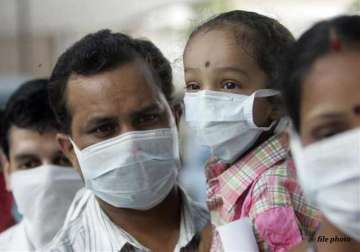875 deaths due to swine flu, no move to vaccinate public: Govt
New Delhi: Swine flu has killed 34 more people raising the toll to 875 in the country this year and the number of affected crossed the 15,000 mark, government said today, but there is no
New Delhi: Swine flu has killed 34 more people raising the toll to 875 in the country this year and the number of affected crossed the 15,000 mark, government said today, but there is no move as of now to vaccinate the general public from the respiratory disease.
Ahmedabad district collector, meanwhile, imposed restrictions under Section 144 CrPC in the city prohibiting mass gatherings without prior permission to prevent spread of swine flu, an official statement said.
Stating that swine flu is becoming a matter of “great concern”, Health Minister J P Nadda confirmed in both Houses of Parliament that the cases of Influenza A currently being reported are of H1N1 which is the same virus which took a huge toll in 2009 and 2010 and there is “no mutation” in the virus.
The World Health Organisation (WHO) said it was “carefully watching” the swine flu situation in India though it said that there are “no signs” yet of the makings of a large outbreak of the H1N1 virus.
Collated data by Health Ministry said 875 people have died of the disease in various states till February 23 this year while 15,413 people were affected.
The morbidity and more importantly the mortality associated with the influenza are a matter of “great concern” for all of us, Nadda told Parliament.
Nadda said the number of reported cases in 2009 were 27,236 and in 2010 there were 20,604 cases. The number of deaths in 2009 were 981 and rose to 1,763 in 2010.
He said the government has recommended vaccine only for the health workers and the decision was taken after due consultations with experts.
“Vaccination of general public is not advocated as a public health strategy at this juncture...the vaccination becomes effective after about three to four weeks of the injection and the immunity is only for about one year.
Moreover, vaccination may not provide full protection against the virus,” he pointed out.
The Health Minister said India, as also other parts of the world, were affected by Influenza A H1N1 pandemic in 2009 and 2010.
Nadda said his ministry is closely monitoring the situation and is in regular contact with the affected states.
The Minister rejected suggestions about shortage of Oseltamivir, drug used for treating Influenza A H1N1 or swine flu, and said it is manufactured in India.
“We have held meetings with the manufacturers on two occasions. These indigenous manufacturers have confirmed that they have sufficient capacity and stock of active pharmaceutical ingredients to meet requirements,” he said.
He said Oseltamivir drug used during the time of pandemic in 2009-2010 remains effective for treatment now as well.
“It has been confirmed, both by National Institute of Virology (under ICMR) and National Centre for Diseases Control, (Delhi) that the cases of Influenza A currently being reported are of H1N1.
“It is the same virus of 2009 and there is no mutation in the virus. Consequently, the drug Oseltamivir used during the time of pandemic 2009-2010 remains effective for treatment now also,” Nadda said in the statement amid fears that the virus might have mutated.
As per the Health Ministry data, the highest number of casualties have been reported from Rajasthan where 225 people have perished due to the disease while 4,734 people are affected with the deadly virus. Gujarat is the second most affected state with 219 people dead and 3,337 people affected with the virus.
